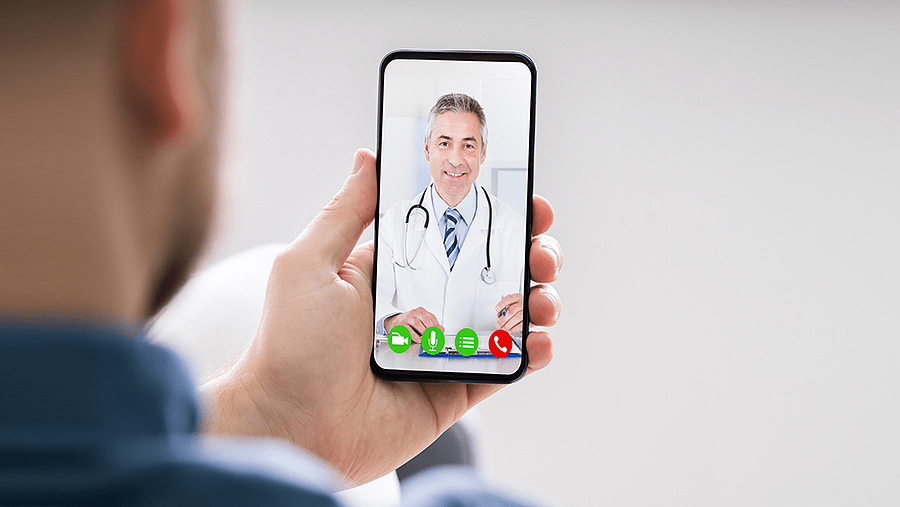Why the Healthcare Industry Cannot Ignore Health Wearables Anymore

Wearable health technology is one of the most interesting and emerging trends around the globe. If patient-generated data can directly coincide with electronic health records, then doctors can monitor patients’ activities, such as step counts or heart rates. There is a wide range of wearables including smart watches, FitBits, activity trackers, smart headphones, and virtual reality headsets that are becoming increasingly popular.
These healthcare wearables support the two major healthcare purposes, i.e., prevention and treatment. The advantage of these wearable devices is that it permits healthcare experts to continually measure patients’ vitals and gather precise data in order to give better insight into their condition. Wearable technology has the supremacy to change the healthcare sector.
Wearables for Remote Patient Monitoring
The best thing about wearables for remote patient monitoring is that it helps in providing quality care at a distance and intervenes timely to disregard health issues. The remote patient monitoring (RPM) tools are specifically useful for patients with chronic situations. A device that is used for remote patient monitoring purposes stores the measured data and conveys it to the official provider. This also helps in minimizing the manual data collection and allows clinicians to pay heed to readings to have more insights into the health of the patients. RPM tools have become efficient lately and the RPM software was offered to the patients to check their symptoms during COVID19 as well. This also provided patients with all the educational resources and the chance to talk about their symptoms and concerns with a doctor without contact with both parties. RPM is known as a helpful way of managing the infection at home. Let’s take an example:
For Instance:
Wearables can track a child’s physical activity during the day and assist them to take on a healthy lifestyle by supporting exercising, drinking water, brushing teeth, and sleeping well. For example, gamified activity trackers with pedometers and motion sensors might encourage the child to move more.
Health Wearables in Therapy
Health wearables do not just do the monitoring, but they might surely be used as a part of therapy for mental conditions, stroke recovery, and also chronic illnesses including rheumatoid arthritis and sclerosis, etc. If we talk about stroke, it is a difficult procedure and health wearables could assist in reducing it. There are basically 4 main wearable sensors that are used in stroke like IMUs, EMG, potentiometers/encoders, and flexible sensors. There are four main wearable sensors used in the study of stroke: IMUs, EMG, potentiometers/encoders and flexible sensors. IMUs allow measuring changes in acceleration, inclination and orientation unobtrusively. This is how Healthcare Software Development Solutions help in the best possible way.
Factors behind the Popularity of Wearables
There has been a surge in the number of smart device users as they offer:
-
- More Independence
-
- More Accessibility
-
- Smart Sensors
-
- Smart Watches
-
- Activity Tracking
How Does Wearable Technology Help Healthcare?
In the past, patients had come in to see the doctors to talk about how their health is going. Today patients have access to wearables, apps, or censors they can use at home. Doctors can check how the patients are doing, monitor them, and suggest changes in treatment. That is why it is important to go for Healthcare App Development Solutions to make lives better. Here is how it helps:
Improved patient experience
Customized treatment
Better management
Lower cost
Importance of Wearables
The wearable devices could provide patient monitoring, screening, diagnosis, surveillance, and help with treatment, post-treatment, and ongoing management as well. These devices also find out the effectiveness of treatment. They help in the early detection of setbacks and tell if there is any deterioration of health after a period of improvement. These devices are already adopted extensively and do not include any bigger changes in the user behavior and are greatly scalable. It is important to know that digital devices would be a critical solution for remote patient monitoring and patient care. Know the power of technology to better comprehend the human body, wearable devices, and remote patient monitoring that show the future of healthcare.
Wrapping Up
Health wearables are useful not only for self-management but also for a care facility. They are worthy data sources that provide a vision of the patient’s health and permit doctors to personalize treatments and management approaches. Moreover, the data gathered with wearables permits providers to minimize care delivery costs and enhance inventory management, disregarding redundant hospitalizations with the best quality at home.











